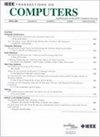vKernel: Enhancing Container Isolation via Private Code and Data
IF 3.6
2区 计算机科学
Q2 COMPUTER SCIENCE, HARDWARE & ARCHITECTURE
引用次数: 0
Abstract
Container technology is increasingly adopted in cloud environments. However, the lack of isolation in the shared kernel becomes a significant barrier to the wide adoption of containers. The challenges lie in how to simultaneously attain high performance and isolation. On the one hand, kernel-level isolation mechanisms, such asvKernel:通过私有代码和数据加强容器隔离
云环境中越来越多地采用容器技术。然而,共享内核中缺乏隔离性成为广泛采用容器的一大障碍。挑战在于如何同时实现高性能和隔离。一方面,内核级隔离机制(如 seccomp、abilities 和 apparmor)能在不增加太多开销的情况下实现良好的性能,但缺乏对每个容器定制的支持。另一方面,基于用户级和虚拟机的隔离机制提供了更优越的安全保障,并允许自定义,因为容器被分配了一个专用内核,但代价是高昂的开销。我们提出了内核隔离框架 vKernel。vKernel 依靠内联钩子拦截发送到主机内核的请求并将其重定向到 vKI,在 vKI 中实施容器特定的安全规则、函数和数据。通过案例研究,我们证明了在 vKernel 下,用户定义的数据隔离和内核定制可以通过合理的工程设计得到支持。利用微基准、云服务和实际应用对 vKernel 进行的评估表明,vKernel 可以实现良好的安全保证,但开销要小得多。
本文章由计算机程序翻译,如有差异,请以英文原文为准。
求助全文
约1分钟内获得全文
求助全文
来源期刊

IEEE Transactions on Computers
工程技术-工程:电子与电气
CiteScore
6.60
自引率
5.40%
发文量
199
审稿时长
6.0 months
期刊介绍:
The IEEE Transactions on Computers is a monthly publication with a wide distribution to researchers, developers, technical managers, and educators in the computer field. It publishes papers on research in areas of current interest to the readers. These areas include, but are not limited to, the following: a) computer organizations and architectures; b) operating systems, software systems, and communication protocols; c) real-time systems and embedded systems; d) digital devices, computer components, and interconnection networks; e) specification, design, prototyping, and testing methods and tools; f) performance, fault tolerance, reliability, security, and testability; g) case studies and experimental and theoretical evaluations; and h) new and important applications and trends.
 求助内容:
求助内容: 应助结果提醒方式:
应助结果提醒方式:


